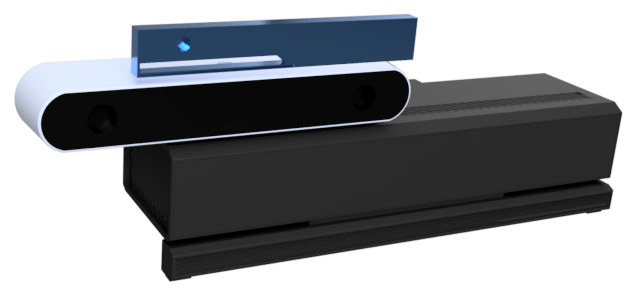公开数据集
 数据结构 ?
426.83M
数据结构 ?
426.83M
 Data Structure ?
Data Structure ?
* 以上分析是由系统提取分析形成的结果,具体实际数据为准。
README.md
Time-of-Flight sensors and stereo vision systems are two of the most diffused depth acquisition devices for commercial and industrial applications. They share complementary strengths and weaknesses. For this reason, the combination of data acquired from these devices can improve the final depth estimation performance. We introduces a dataset acquired with a multi-camera system composed by a Kinect v2 ToF sensor, an Intel RealSense R200 active stereo sensor and a ZED passive stereo camera system. The acquired scenes include indoor settings with different external lighting conditions. The depth ground truth has been acquired for each scene of the dataset using a line laser. The data can be used for developing fusion and denoising algorithms for depth estimation and test with different lighting conditions. A subset of the data has already been used for the experimental evaluation of the stereo-ToF fusion method of Agresti et al.
Data Collection
The multi camera acquisition system used to acquire the proposed dataset is arranged as in the figure below. The reference system is the ZED camera in the center, underneath the ZED there is the Kinect and above there is the RealSense R200. The three cameras are kept in place by a plastic mount specifically designed to fit them. The depth camera of the Kinect is approximately horizontally aligned with the left camera of the ZED with 40 mm vertical displacement, while the color camera is approximately in between the passive stereo pair. The RealSense R200 is placed approximately 20 mm above the ZED camera, with the two IR and color camera inside the baseline of the passive stereo pair.

The subjects of the 10 scenes in the REAL3EXT dataset try to stress various flows of the stereo and ToF systems. Critical points are for example lack of texture for the passive stereo system and the presence of low reflect elements and external illumination for the active sensors. The scenes are composed by flat surfaces with and without textures, plants and objects of various material such as plastic, paper and cotton fabric. These are characterized by various specularity properties as reflective and glossy surfaces and rough materials. Each scene was recorded under 4 different external lighting conditions, which are the following: with no external light; with regular lighting; with stronger light; with an additional incandescent light source. Each lighting condition can highlight the weakness and strength of the different depth estimation algorithms. We added the acquisitions with the additional incandescent light source since its spectrum, in the IR wavelength, covers the working range of the active depth cameras and it is a known problem for those devices.


- 分享你的想法
全部内容
数据使用声明:
- 1、该数据来自于互联网数据采集或服务商的提供,本平台为用户提供数据集的展示与浏览。
- 2、本平台仅作为数据集的基本信息展示、包括但不限于图像、文本、视频、音频等文件类型。
- 3、数据集基本信息来自数据原地址或数据提供方提供的信息,如数据集描述中有描述差异,请以数据原地址或服务商原地址为准。
- 1、本站中的所有数据集的版权都归属于原数据发布者或数据提供方所有。
- 1、如您需要转载本站数据,请保留原数据地址及相关版权声明。
- 1、如本站中的部分数据涉及侵权展示,请及时联系本站,我们会安排进行数据下线。






 VIP下载(最低0.24/天)
VIP下载(最低0.24/天) 475浏览
475浏览 0下载
0下载 0点赞
0点赞 收藏
收藏 分享
分享